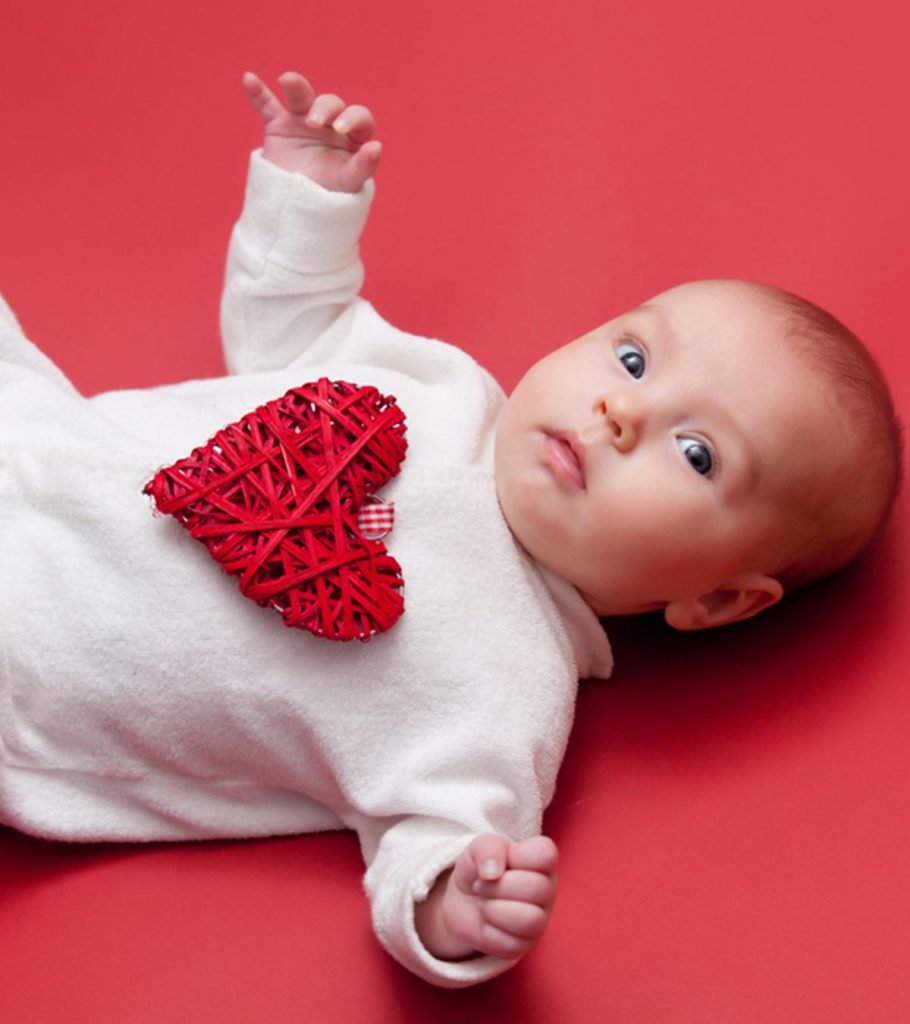Image: Shutterstock
A guest comes home, and your infant stares at him till he leaves. Does this sound familiar? Almost every new parent goes through such an episode at least once. You might have also felt concerned at one point. However, it is nothing to worry about.
The habit of staring at people, objects, and even walls and ceiling is quite common in newborns and infants. It usually indicates that the baby is on the right development track, and their vision is developing adequately.
Read on as we tell you about the reasons behind newborn staring, what is normal, and when to be concerned about your baby’s staring habit.
Understanding A Baby’s Vision
In order to know why babies stare, we first need to understand their vision (1) (2). Below are some salient points about a baby’s developing eyes and vision.
- Newborns are quite sensitive to light at birth. Their pupils become very small when exposed to bright light.
- Objects located to the baby’s side are more easily visible to them through their peripheral or side vision. However, they cannot see far away things clearly as their central vision is still developing.
- A baby can best focus on objects that are eight to 12 inches away. They can look into their mom’s or dad’s eyes if they are close to them. Anything farther than that would be out of focus and blurred.
- A couple of weeks after birth, babies can distinguish light and dark patterns, and grow attracted to bright colors and large shapes. For up to one month, they prefer to see brightly colored objects.
Thus, babies are more attracted to human faces, followed by bright colors, images with contrasting colors or patterns, and moving objects. Pictures or toys in black and white also tend to keep them engaged for longer than others.
Why Do Babies Stare?
After understanding a baby’s vision, it is evident that babies stare at objects and people as they find them interesting. A baby’s vision is not fully developed, and they are mostly attracted to light, moving objects, such as ceiling fans, and objects with contrasting colors (3).
By the age of six to eight weeks, as their vision is better developed than before, they would often focus on human faces. It eventually causes a change in preference from staring at inanimate objects to staring at faces.
What Do Babies Stare At?
Babies usually stare at the following things.
- Ceiling fans and moving objects: Sensory experiences, such as looking at moving objects and high contrast pictures, stimulate babies’ rapidly developing brains. Ceiling fans often cause intense stimulation and catch their brain’s attention. If your baby is staring at a ceiling fan or any other moving object, fret not as it is part of their visual development.
- Attractive faces: Research notes that human infants tend to stare at attractive faces even when they are a few days old (4). Infants who are three to four months of age prefer staring at the attractive face when shown images of attractive and less attractive faces. The perception of attractiveness may vary among babies. An attractive face is usually the one with some striking feature that holds the baby’s attention.
- Different features: A unique feature of an object or a face is likely to keep the baby interested and make them stare at it. Interesting and unique features may include colorful hair, long beard, eyeglasses, moving parts of a machine, lights of a vehicle, and different textures.
- Contrasting things: It could be two contrasting colors or contrasting outlines, such as the surface of a wall meeting the edge of a table. Babies tend to find it interesting and stare at it for longer.
- At nothing: Sometimes, babies appear to stare at empty space, and it is nothing to worry about. Since their vision system is still developing, they may randomly look at places beyond the range of their vision. If they are staring at nothing, it indicates they are exercising their eyes and vision to see things clearly eventually.
If your baby is staring at none of the above-listed things, don’t worry. As each month passes, they should be able to focus on an object, track a moving object, reach for an object, and even recognize and recall things (1).
When To Worry About A Baby’s Staring Habit?
The habit of staring is usually quite common up to the age of four months. If it persists beyond four months, you may consult a pediatrician or a pediatric ophthalmologist.
Some other signs to look out for are (5) (6):
- Baby’s eyes appear crossed or seem to wander randomly.
- The pupils appear white or have a cloudy appearance.
- The baby does not pay attention to faces by two months of age.
- The baby does not track moving objects by four months of age.
The habit of staring among newborns and babies below four months of age is not a cause of concern. Parents can help the baby exercise their vision by giving them bright and high-contrast toys. As the baby grows older, their vision and cognitive functions become better, and they grow more adept at using their eyes for recognition and recall of information.
